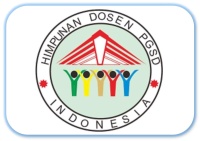Interaksi Sosial Siswa Berprestasi dan Implikasinya dalam Layanan Bimbingan dan Konseling
Abstract
Social interaction is the relationship between individuals and other individuals and with groups that influence each other. Ideally in social interaction there will be cooperation, compromise, emotional control and immediate conflict resolution, but the phenomenon in the field is found by students who are less able to interact with others, close themselves and not have close friends. Therefore, this study aims to describe the social interactions of high achieving students: (1) forms of cooperation, (2) forms of competition, (3) forms of conflict, and (4) forms of accommodation, at Padang State High School 3. This type of research is quantitative with a descriptive approach. The study population amounted to 180 people and samples were taken using purposive random sampling technique. The number of samples is 80 students. The data collection tool used is a questionnaire with a Likert scale. Data were analyzed using percentage techniques. The research findings show that: (1) the form of collaboration is in the good category (37.5%), (2) the form of competition is in the good category (38.8%), (3) the form of conflict is in the good category (42.5%), (4) the form of accommodation is in the fairly good category (36.3%), and in general the social interaction of high achieving students in Padang 3 Public High School is in the good category (42.5%).
Keywords
References
Abu Ahmadi Dan Widodo Supriyono. (2005). Psikologi Belajar. Jakarta: Rineka Cipta
Abdulsyani. (2012). Sosiologi Sistematika Teori Dan Terapan. Jakarta: Bumi Aksara.
Bimo Walgito. (2009). Psikologi Sosial. Yogyakarta: Andi Offset
Dian Wisnu Wardhani dan Sri Fatmawati M. (2012). Hubungan Interpersonal. Jakarta: Salemba Humanika.
Dayakisni.(2001). Interaksi dan Motivasi Belajar Mengajar. Jakarta: Raja Grafindo Persada.
Elly Setiadi.M dan Ridwan Effendi. (2007). Ilmu Sosial Dan Budaya Dasar. Jakarta: Kencana.
Firman.F,& Karneli Y.(2017) Perbedaan Keterampilan Belajar Siswa Berprestasi Tinggi dan Siswa Berprestasi Rendah serta Impilikasinya dalam Bimbingan danKonseling.https://www.researchgate.net/publication/328428892.
Gerungan.W.A. (2009). Psikologi Sosial. Bandung: PT.Refika Aditama
Marjohan, dan Syukur, Yarmis.(2012) Efektifitas Layanan Bimbingan Kelompok dalam Mengurangi Kecemasn Berkomunikasi pada Siswa. Vol .International Journal of Research In Social Sciences, Vol. 2.
Sugiyono. (2011). Metode Penelitian. Bandung: Alfabeta.
Suharsimi, Arikunto. (2014). Prosedur Penelitian Suatu Pendekatan Praktik. Jakarta: Rineka Cipta.
Santosa. (2004). Interaksi dan Motivasi Belajar Siswa. Cetekan 6. Jakarta: Raja Grafindo
Soerjono Soekanto. (2012). Sosiologi Suatu Pengantar. Jakarta: Raja Grafindo Persada.
Selley E. Taylor. (2009). Psikologi Sosial. Terjemahan Tri Wibowo. Jakarta: Kencana.
Tulus Winarsunu. (2012). Statistik dalam Penelitian Psikologi dan Pendidikan. Malang: UUM Press
DOI: http://dx.doi.org/10.24036/e-jipsd.v7i4.5706


